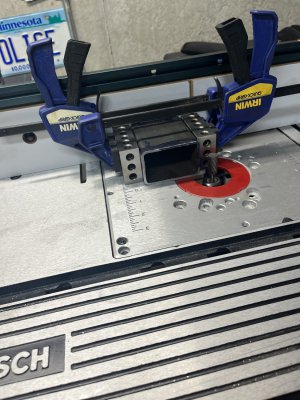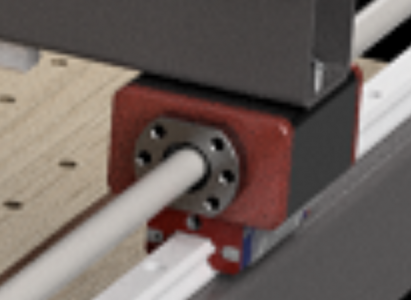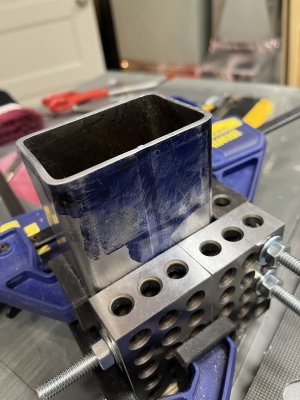- Joined
- Sep 18, 2023
- Messages
- 28
A postscript for anyone who stumbles upon this later:
After I scribed the line around the tubes, I tried a few different ways of cutting them to make them as close to square as I could without a mill. I had reasonable results using a 2HP belt sander I made for knife making and a file. I got the best results like this:
While I don’t have a mill, I do have a router table. I put a carbide end mill into the router, use machinist squares to align a guide, and make the shallowest cuts I can set up.
I’ve clamped123 blocks to the piece and slide them, not the piece, along the guide. They’re square, the piece is not (yet), so using them to square up and having a small gap between the piece and the guide should result in a more square cut.
Obviously, a mill would be stiffer, but this is the best I think I can manage with the tools I have, and for the PrintNC, this should be within spec.

After I scribed the line around the tubes, I tried a few different ways of cutting them to make them as close to square as I could without a mill. I had reasonable results using a 2HP belt sander I made for knife making and a file. I got the best results like this:
While I don’t have a mill, I do have a router table. I put a carbide end mill into the router, use machinist squares to align a guide, and make the shallowest cuts I can set up.
I’ve clamped123 blocks to the piece and slide them, not the piece, along the guide. They’re square, the piece is not (yet), so using them to square up and having a small gap between the piece and the guide should result in a more square cut.
Obviously, a mill would be stiffer, but this is the best I think I can manage with the tools I have, and for the PrintNC, this should be within spec.




